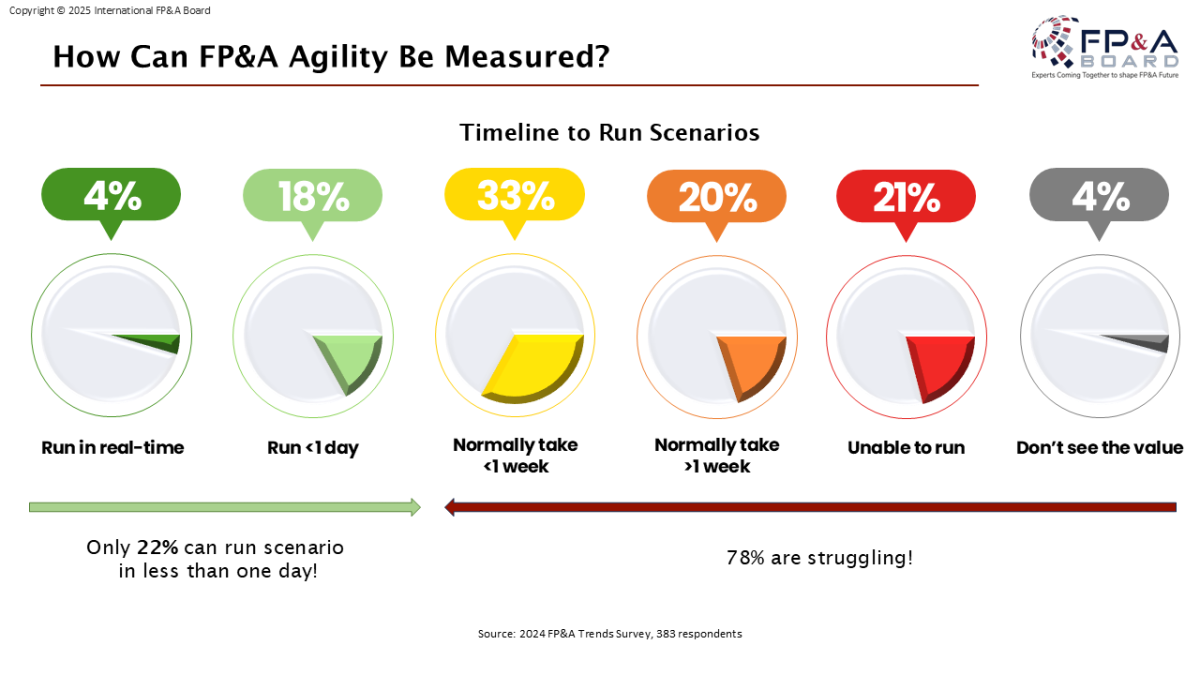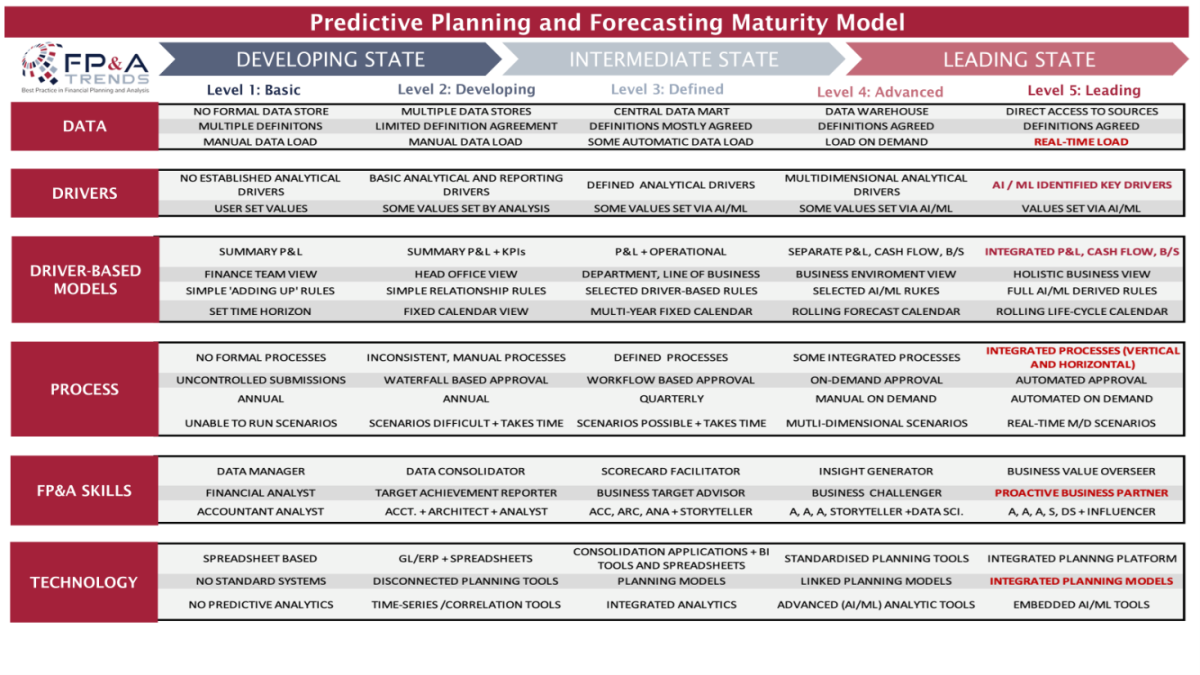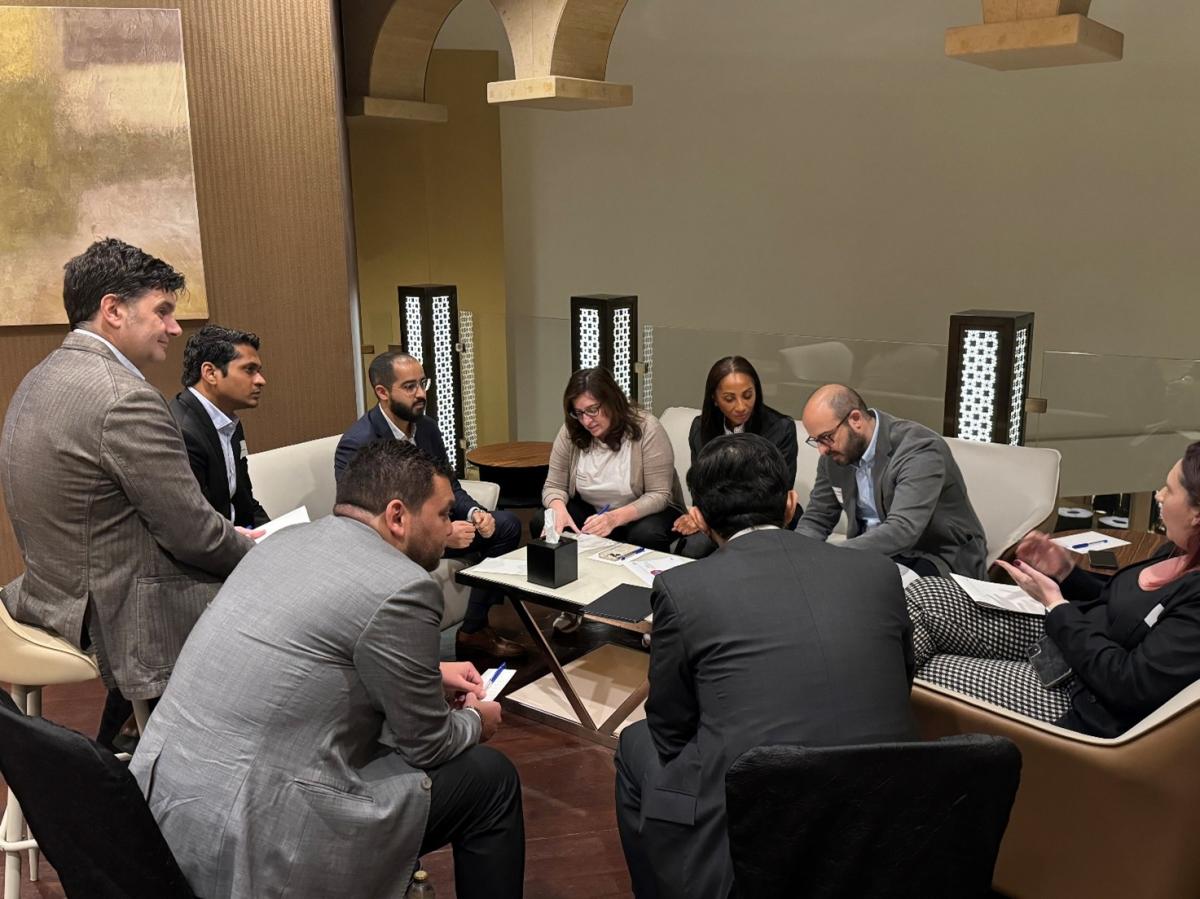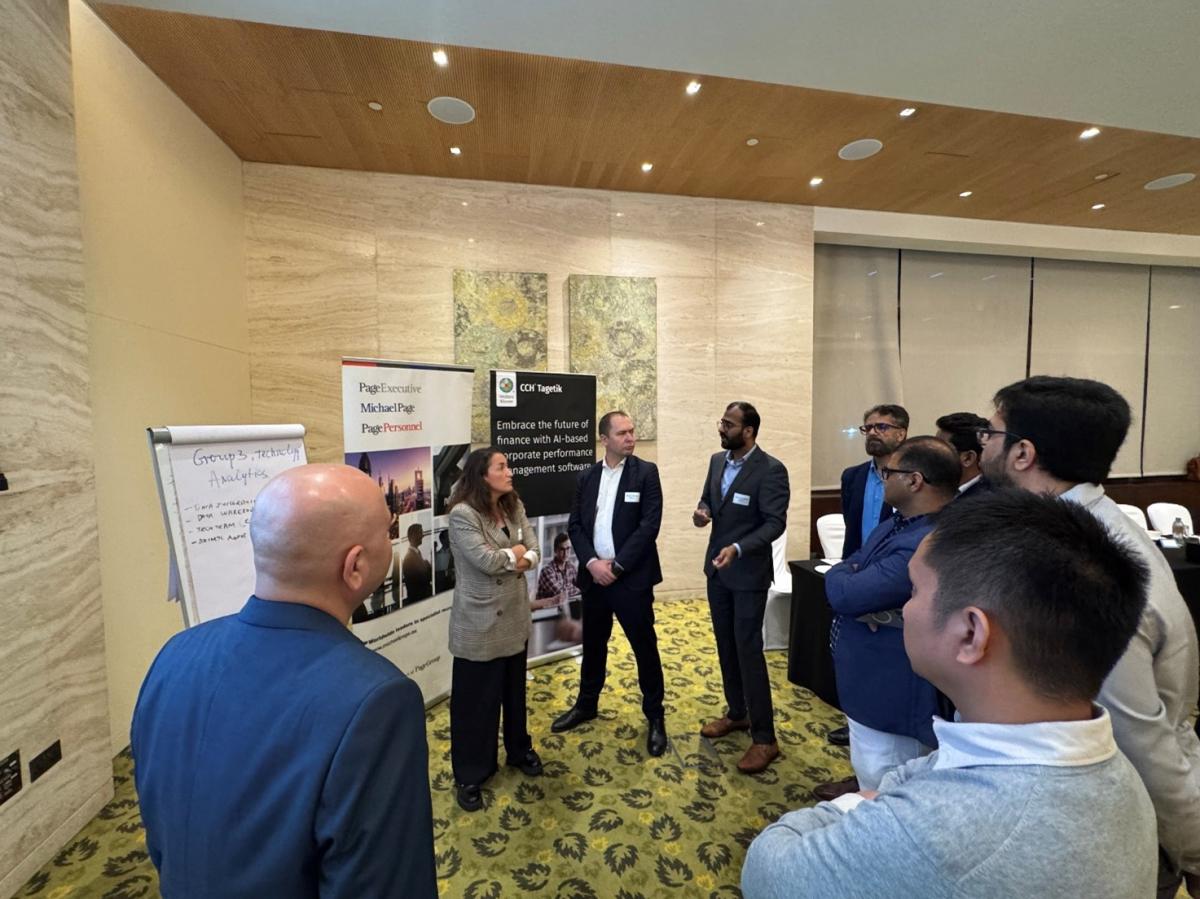Introduction: The Strategic Need for Predictive Planning
The 13th Dubai FP&A Board meeting convened 32 senior finance professionals to explore one of modern finance’s most urgent and transformational topics: Predictive Planning and Forecasting (PPF). Chaired by Larysa Melnychuk, CEO of FP&A Trends Group and Founder of the International FP&A Board, the event was held in partnership with Michael Page and proudly sponsored by Wolters Kluwer / CCH Tagetik.
Finance leaders from organisations including Hilti Group, Brunswick Group, UPS, Hitachi Energy, Kimberly-Clark, Unilever, Siemens, Imperial Brands, and Procter & Gamble engaged in dynamic discussions on transitioning from static models to predictive, value-driven FP&A frameworks.

Figure 1: Dubai FP&A Board №13 Participants, February 2025
Why Predictive Planning Now?
The meeting opened with a clear message: traditional forecasting models can no longer keep pace with the speed and complexity of today’s business environment. Predictive Planning, built on real-time data, driver-based models, and advanced analytics, is emerging as a core capability for high-performing finance teams. Participants were asked to reflect on one word that describes the impact of Predictive Planning and Forecasting on their organisations.
Commonly shared words included:
- Accuracy
- Fictional (reflecting model scepticism)
- Agility
- Risk mitigation
- Speed
- Efficiency
- Possibilities
- Alternatives
- Scenario
- Data & drivers
These reflections showed that Predictive Planning resonates across strategic, operational, and technological dimensions.
Shared Perspectives from the Global Board
Insights from seven FP&A Board chapters revealed diverse views on PPF. When asked to share one word about its impact, participants responded:
- London: “Customer-centric”
- New York: “Connectivity”
- Paris: “Scenario analysis”
- Zurich: “Overwhelming but necessary”
Despite differences in maturity, all agreed: predictive success depends on aligning systems, people, and leadership.
The figure below summarises the essence of Predictive Planning and Forecasting.

Figure 2
A key framework presented during the session outlined the integrated success factors for implementing Predictive Planning and Forecasting.

Figure 3
This framework underscored that effective Predictive Planning cannot succeed in silos. It requires an interconnected ecosystem supported by technology, governed data, and empowered teams.
How Agile Are We? Audience Polling Insights
In addition, attendees discussed how agility can be measured and why scenario speed matters.

Figure 4
According to the 2024 FP&A Trends Survey, just 22% of global respondents reported high scenario agility, while 78% are still struggling. Thus, manual processes and siloed systems remain a barrier for most organisations. Manual processes and siloed systems remain a major barrier to real-time response and forecasting accuracy.
Assessing Readiness: The PPF Maturity Model
The Predictive Planning and Forecasting Maturity Model was introduced to help teams benchmark their evolution. The model outlines five stages:
Basic – Manual processes, fragmented data
Developing – Some automation, early alignment
Defined – Standardised, integrated models
Advanced – Real-time inputs, cross-functional coordination
Leading – Fully predictive, AI-driven, strategic FP&A

Figure 5
Participants were encouraged to reflect on their current stage and consider targeted investments in people, processes, and platforms to move forward.
Ignacio Anglada, Group CFO at Julphar Pharmaceuticals presented a case study. His presentation, titled “From Producing What You Can to Producing What You Want,” outlined the company’s transformation journey.
Group Work: Turning Insight into Action
Attendees worked in small groups to define the next steps for PPF success. Discussions focused on three dimensions:

Figure 6: Group discussion of Dubai FP&A Board №13, February 2025
1. Group 1 – Dynamic Driver-Based Model Development
- Leadership alignment for a Predictive Planning Model (PPM)
- Identify the lead indicators
- Ability to craft a story from the output
- Strategy of the business – define the parameters
- Technology mapping
2. Group 2 – Process Improvement
Data Focus:
- Quality
- History
- Integration
- Availability
Collaboration & Governance:
- Team alignment and engagement
- Communication – team-wide
- One source of truth
- Challenges from previous processes
Operational Focus:
- Prioritisation of activities
- Tools and technology
- Time management
- Standardised models
3. Group 3 –Technology and Analytics
- Data integration
- Data warehouse
- Tech team (engineering, solutioning)
- Driver model & process improvement
- ERP
- BI tools
- Data security
- Adaptability

Figure 7: Group discussion of Dubai FP&A Board №13, February 2025
Outputs from group work revealed practical roadmaps and reaffirmed that successful PPF implementation requires coordination across systems, skills, and strategy.
Conclusion: Finance Must Lead the Way
The 13th Dubai FP&A Board highlighted one central message: Predictive Planning is no longer a “nice to have” but a competitive necessity. Finance must lead the charge by integrating people, processes, and platforms to unlock speed, foresight, and strategic impact.
The event demonstrated how Predictive Planning and Forecasting can elevate FP&A from reporting to business partnering, from hindsight to foresight, from case studies to frameworks, group debates to global benchmarking.

Figure 8: Group discussion of Dubai FP&A Board №13, February 2025







